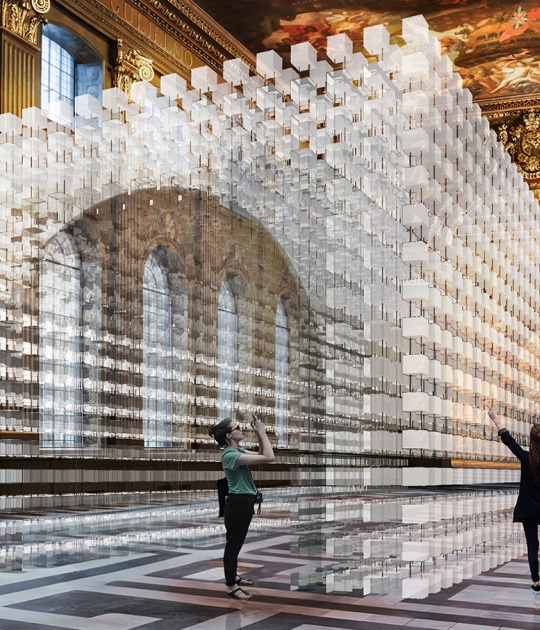
The title chosen by Caio Reisewitz for the intervention “Suspendre el Cel” means suspending the sky. A term that alludes to the Yanomami worldview, which believes that the earth emerged from a piece of the sky and that, if man forgets ancestral knowledge and destroys it, the sky will fall again; inspired by the thought of activist shamans Davi Kopenawa and Ailton Krenak, in defense of a more harmonious relationship with the earth and the interconnection between all living beings.
The Amazon not only represents a natural wealth for the artist, but also an important cultural asset and the true basis of Brazilian civilization. In his work, committed art and political activism are forms of resistance or of “suspending the sky” at a time when it is urgent to draw attention to this ecosystem that is indispensable for the planet.
“Suspending the sky is broadening our horizon; not the future horizon, but the existential one. It is enriching our subjectivities.”
A.Krenak.

The intervention highlights the symbiosis that the Mies van der Rohe Pavilion establishes between the interior and the exterior, and between the built and the natural. The intention of dialogue that is reflected in the Mies pavilion has served as a reference and is reflected in other works by prominent exponents of the architecture of the Modern Movement in Brazil such as Roberto Burle Marx, Oscar Niemeyer and Lina Bo Bardi, who sought to minimize interference in the natural environment that surrounds their projects.
An example of how the Brazilian modern movement understood and incorporated nature in its architecture was Lina Bo Bardi's "The Glass House", used as a reference for "Suspendre el Cel". Where, as in the Mies van der Rohe Pavilion, the glass perimeter blurs the boundary between the exterior and the interior, integrating the green environment into the interior space. A message that points to nature as our home.

Through a selection made by the author at Vivers Barri in Gavà, Catalonia, the pavilion has a plant mass made up of around 600 plants of different types of palm trees, strelitzias, alocacias and ficus, kentias, aralias, monsteras, philodendrons, ferns, chefleras and other plants and shrubs, mostly tropical and Mediterranean, which in some places exceed two metres.
The importance of these plant species has already been identified and studied in the work of Roberto Burle Marx at the 5th International Biennial of São Paulo (1959); in historical exhibitions such as “Brazil Builds” at MoMA-NY (1943) and in “Six Master Painters, Two Crystals, One Sculpture” by Mies van der Rohe at the Museum of Fine Arts in Houston (1963), where the architect incorporated several specimens in the exhibition.
On October 1st, artist Caio Reisewitz, urban architect Isabella Lenzi, renowned for her focus on sustainable design and urban planning, and contemporary art curator and researcher Clàudia Segura will accompany visitors with a conversation about the themes that the intervention invites us to reflect on.

























































